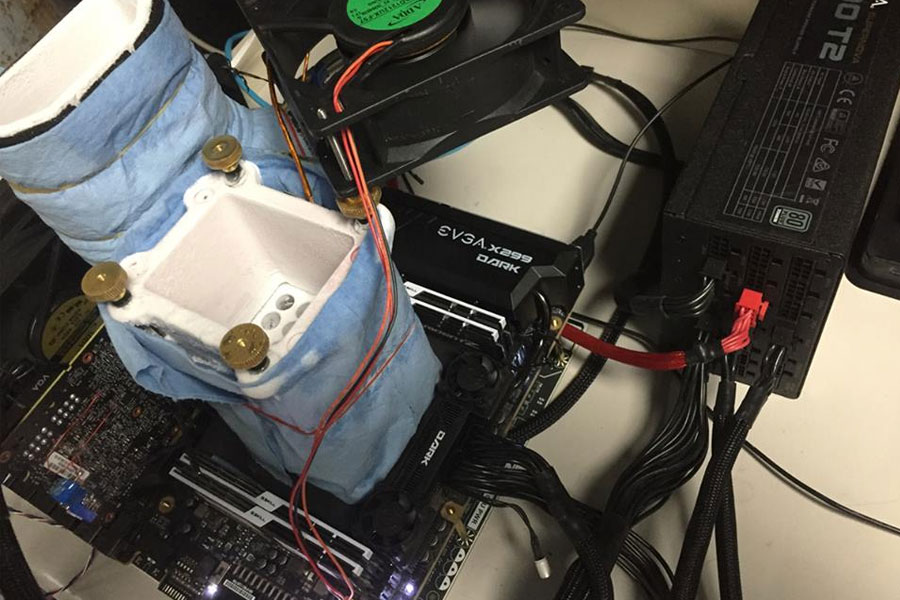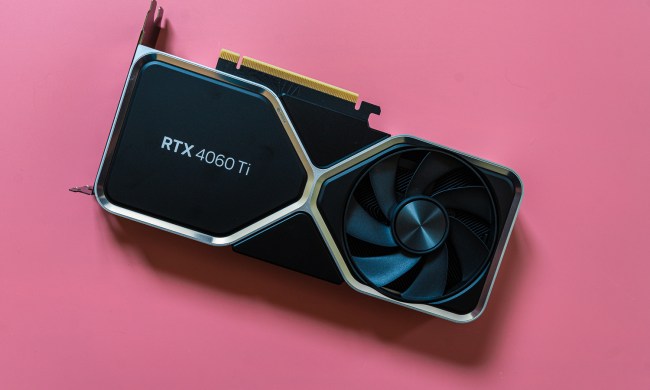
Nvidia’s new RTX-series graphics cards might have fallen short of the performance hype that Nvidia pushed at its original Gamescom reveal, but the top-tier RTX 2080 Ti has some serious power and it seems, serious overclocking potential, too. Thanks to a hefty dose of liquid nitrogen, one overclocker has managed to push the flagship card to new heights. As a reward for his efforts, he’s managed to take the top spot on every modern 3DMark benchmark.
In terms of stock speed, the RTX 2080 is roughly comparable to the 1080 Ti, and the 2080 Ti is more like a Titan enhancement than the typical Ti revamp of an architecture. Perhaps that’s why it was so capable of demolishing the scores of Titan V graphics-powered rigs which have dominated the rankings of 3DMark results for the past year. It took a heavy overclock and some liquid nitrogen to do it, but that does nothing to diminish the results.
Overclocker Vince “Kingpin” Lucido has been a major figure in the hardware overclocking scene for years and especially so when it comes to extreme cooling. He famously overclocked the GTX 1080 Ti to more than 3GHz last year and now has an impressive RTX 2080 Ti overclock feather to put in his cap, too. Under extreme liquid nitrogen cooling, he pushed his 2080 Ti to 2,415MHz, according to WCCFTech. That’s a notable improvement over the stock Founders Edition clock of 1,635 MHz.
That, plus a hefty memory overclock, meant that Kingpin was able to steal the spot in Time Spy Extreme testing, beating out the Titan V-powered competition by more than 500 points. He’s top of the Fire Strike Ultra rankings, too, with a lead of more than a thousand points, and Fire Strike Extreme by an even greater margin.
Although we would expect to see other overclockers reach similar scores in the days and weeks to come as more cards proliferate out through the hardware enthusiast crowd, the big takeaway should be the impressive overclocking potential of the 2080 Ti. Although it is expensive, if powerful cooling solutions can be brought to bear, it seems that its performance headroom is far greater than the stock clocks would suggest. Liquid nitrogen isn’t a viable everyday solution, but if a high-wattage watercooling loop can keep it from getting too hot, longterm overclocks should certainly be possible.




